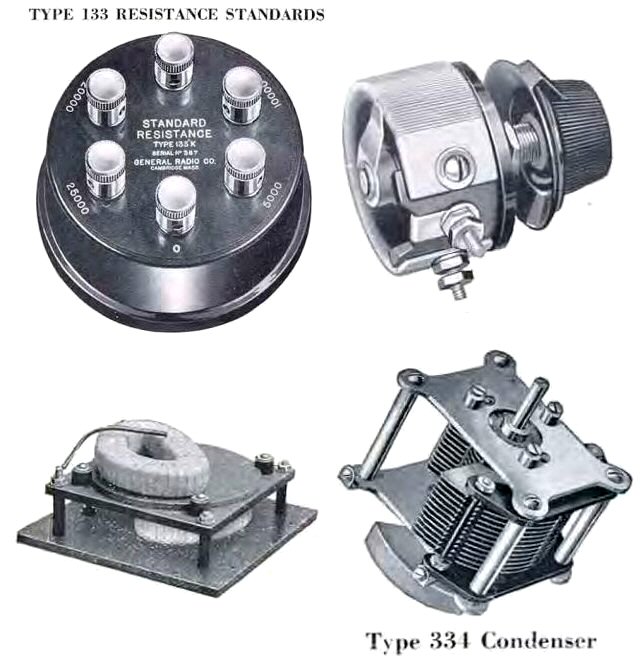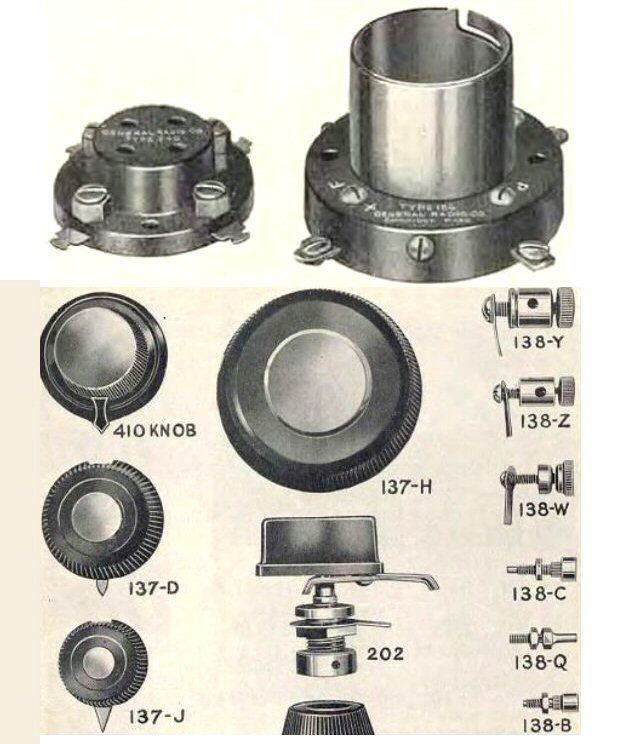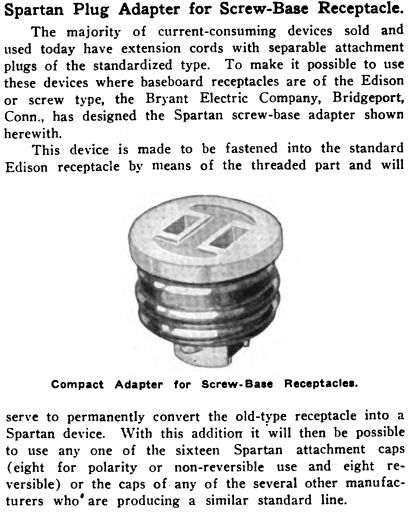Thursday, December 01, 2016
More on GenRad's unique heritage
Still thinking about GenRad. The company continues under the name IET, but it has faded from its former prominence.
Why was it prominent? It provided a service that traditionally (since Hammurabi!) belonged to governments. GenRad made certified reference components and certified test instruments. When you bought GenRad, you paid an extremely high price for provenance and documentation, which enabled you to use the components and instruments for official and legalistic purposes.
The reference components were built with special care from unique materials to insure stability, and their initial calibration was carefully documented.
In the '20s, these components included almost everything you needed to build a radio. Capacitors, resistors, inductors...
 GR offered modules containing major portions of the circuitry,
GR offered modules containing major portions of the circuitry,
 and smaller bits like sockets and connectors and switches and knobs.
and smaller bits like sockets and connectors and switches and knobs.
 The only thing they didn't make was tubes.
Other manufacturers in other fields make standardized instruments and measuring tools, but I can't think of any parallel to GR's reference components, active parts of the usual end product.
Did anyone sell a reference agitator for a washing machine? A reference exhaust valve for a car? A traceable roofing nail? A calibrated curtain rod?
Manufacturers certainly develop their own internal standards for all of those devices, but they don't sell the standards.
= = = = =
Irrelevant tech note: I'm surprised that GR was still mounting the screw-type lamp plug on its power supply unit in 1928. Around 1910 some houses were wired with lamp sockets in the wall. Terrible idea in every way. Easy shock, constant twisting of cords. By 1917 the screw-base had already been replaced by the two-pin plug on appliances, and adapters like this became semi-permanent in older houses.
The only thing they didn't make was tubes.
Other manufacturers in other fields make standardized instruments and measuring tools, but I can't think of any parallel to GR's reference components, active parts of the usual end product.
Did anyone sell a reference agitator for a washing machine? A reference exhaust valve for a car? A traceable roofing nail? A calibrated curtain rod?
Manufacturers certainly develop their own internal standards for all of those devices, but they don't sell the standards.
= = = = =
Irrelevant tech note: I'm surprised that GR was still mounting the screw-type lamp plug on its power supply unit in 1928. Around 1910 some houses were wired with lamp sockets in the wall. Terrible idea in every way. Easy shock, constant twisting of cords. By 1917 the screw-base had already been replaced by the two-pin plug on appliances, and adapters like this became semi-permanent in older houses.
 When your corporate mission is enforcing standards, you should enforce the best standards.
When your corporate mission is enforcing standards, you should enforce the best standards.
 GR offered modules containing major portions of the circuitry,
GR offered modules containing major portions of the circuitry,
 and smaller bits like sockets and connectors and switches and knobs.
and smaller bits like sockets and connectors and switches and knobs.
 The only thing they didn't make was tubes.
Other manufacturers in other fields make standardized instruments and measuring tools, but I can't think of any parallel to GR's reference components, active parts of the usual end product.
Did anyone sell a reference agitator for a washing machine? A reference exhaust valve for a car? A traceable roofing nail? A calibrated curtain rod?
Manufacturers certainly develop their own internal standards for all of those devices, but they don't sell the standards.
= = = = =
Irrelevant tech note: I'm surprised that GR was still mounting the screw-type lamp plug on its power supply unit in 1928. Around 1910 some houses were wired with lamp sockets in the wall. Terrible idea in every way. Easy shock, constant twisting of cords. By 1917 the screw-base had already been replaced by the two-pin plug on appliances, and adapters like this became semi-permanent in older houses.
The only thing they didn't make was tubes.
Other manufacturers in other fields make standardized instruments and measuring tools, but I can't think of any parallel to GR's reference components, active parts of the usual end product.
Did anyone sell a reference agitator for a washing machine? A reference exhaust valve for a car? A traceable roofing nail? A calibrated curtain rod?
Manufacturers certainly develop their own internal standards for all of those devices, but they don't sell the standards.
= = = = =
Irrelevant tech note: I'm surprised that GR was still mounting the screw-type lamp plug on its power supply unit in 1928. Around 1910 some houses were wired with lamp sockets in the wall. Terrible idea in every way. Easy shock, constant twisting of cords. By 1917 the screw-base had already been replaced by the two-pin plug on appliances, and adapters like this became semi-permanent in older houses.
 When your corporate mission is enforcing standards, you should enforce the best standards.
When your corporate mission is enforcing standards, you should enforce the best standards.
Labels: Metrology
